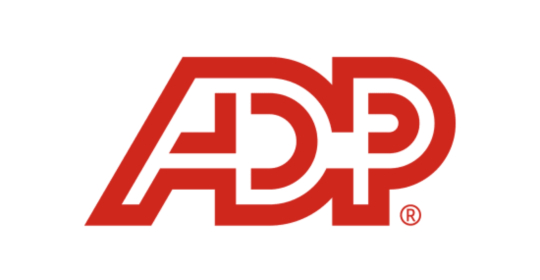The past decade of developments in the field of digital transformation have seen businesses across the globe adopt tried and tested website layouts, bolster their digital presence with eCommerce SEO services, and create user pathways leading to action-oriented landing pages to ensure optimal lead generation.
But how does the growing need for digital literacy factor into the development and presentation of your website and SEO content? There are two simple answers to this. First of all, designing your site with digital literacy in mind will improve your site’s overall accessibility and thus, your user interactions. Secondly, optimising your content to ensure it appeals to a digitally literate audience will ensure that your brand looks good both in the eyes of search engines as well as to your site’s visitors, ultimately boosting brand awareness.
We’ll be exploring both of these positive impacts in-depth below, as well as taking a closer look at digital literacy and its growing prevalence in the realm of digital marketing.
Using principles of digital literacy to boost site accessibility
First and foremost, we need to ask ourselves ‘what is digital literacy?’. In the simplest terms, digital literacy is the ability to use technology to both create and disseminate information. A citizen who is digitally literate will be able to navigate digital channels like web pages, social media platforms, and other technological applications with ease, alongside being able to think critically about any information they see online.
For digital natives (i.e. young people who have been able to grow alongside the developments of the digital age), navigating websites and understanding the flow of information in digital spheres may be as natural as reading a book. For older citizens or even citizens with limited access to the web, however, digital literacy is absolutely something that must be taught or at the very least, absorbed through use.
When creating user journey maps, seasoned UX designers do their best to ensure that the flow of information presented in a website or mobile app is as intuitive as possible. Not only will doing so allow a maximum number of users to experience a positive and productive interaction with your developed technology, but a more accessible user experience will also help bridge the gaps in opportunities between digitally literate and illiterate populations. This bridging of the gap can naturally boost your brand’s reputation as well (though more on that later).
It’s essentially in your best interests to ensure that the design and layout of your app or website are accessible to a wide audience, as this will allow you to convert a larger number of users over a more limiting or exclusionary site layout or design.
Why digital literacy is vital to brand awareness
A digitally literate audience is reflective, analytical, and they value high-quality content above anything else. This does not mean that digitally literate citizens are ‘harder to please’. They are, in fact, a lot easier to interact with online than you may think, simply because they’re able to determine for themselves what information is and isn’t reputable. In other terms, a digitally literate audience will ensure that your high-quality content receives the exposure it truly deserves, both on SERPs as well as through sharing and advocating.
If you position your digital enterprise as a reputable source of information, providing only verified information and maintaining your social, environmental, and professional responsibilities, digitally literate users or site visitors are more likely to become powerful advocates of your brand over simply being occasional users or customers. In a world that has a more than alarming shortage of transparent and trustworthy digital enterprises, your organisation has a monumental opportunity of becoming reputable fixtures of your industry on a global scale.
In taking the extra time to cultivate high-quality web copy and on-page content alongside boosting your site’s overall accessibility, you’ll be increasingly likely to attract positive user attention, as well as steadily build your enterprise’s visibility on SERPs. All of this can be achieved simply by paying mind to digital literacy.
How to develop an online business with digital literacy in mind
Of course, it’s one thing to refer to ‘digital literacy’ as a field of study or even as an abstract concept, but it’s another to understand just how to put the principles of this study into action through the development and design of your online business.
Knowing your audience or target demographic isn’t just a ‘strong starting point’, but quintessential to ensuring that your online business is as accessible as possible, especially if your target demographic aren’t likely to be digital natives. If you foresee the need to adapt existing templates for digital interactions to better accommodate your audience, these adaptations are best handled earlier in your organisations’ developmental process. You can also use these adaptations to help define your brand’s identity in itself.
For instance, if you’re marketing clothing to older people, you’re unlikely to use flashy texts, loud colours, or god forbid, younger models. The tone of your brand is also likely to be more refined and less reliant on emojis, and your site is less likely to be equipped with seamless flows of information and more clear-cut linear pathways to accommodate a greater array of digitally literate users.
Knowing your target demographic will also help you determine which digital channels will be most effective for you and your brand to utilise when communicating with potential customers.
The ties between digital literacy and digital transformation
There is also one question that’s well worth asking: is it possible to teach digital literacy to digital natives as well? The short answer is yes. Digital transformation is an ever-evolving phenomenon, and even digital natives interact with new processes on a daily basis. The one advantage that digital natives possess is that they’re able to interact with new consumer technologies at every stage of that technology’s developmental journey.
Yes, digital transformation is ever-evolving, but it does so incrementally. So long as you and your enterprise create new and exciting user experiences that balance familiarity alongside innovation, users of all levels of digital literacy are likely to have positive interactions with you and your wider organisation.






